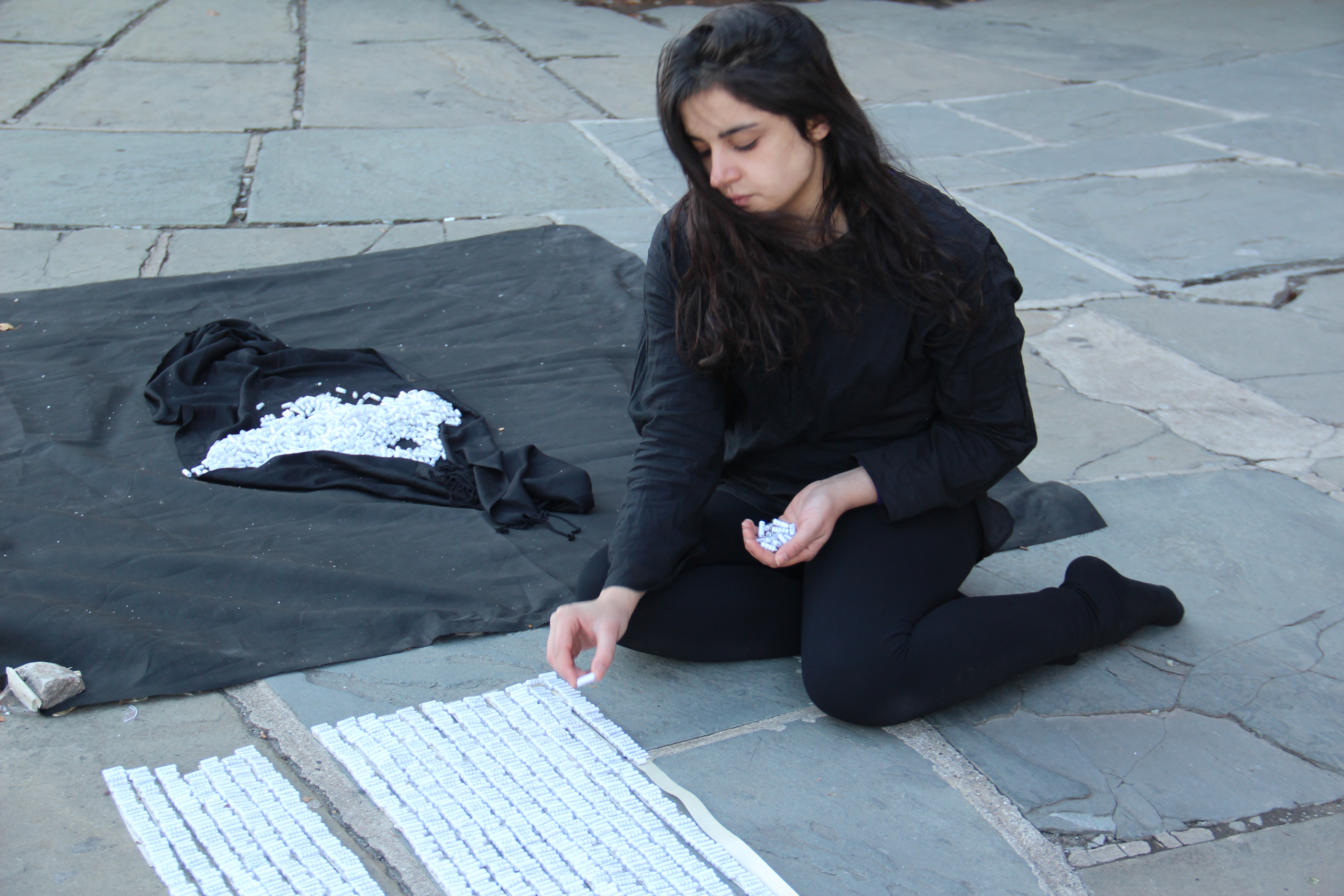Last December, F Newsmagazine published “The Most Embarrassing Thing I Could Do,” a profile highlighting one SAIC student’s controversial work. In the profile the student artist describes a photograph in which he, a fully clothed, affluent, Asian male, sits grinning on the shoulders of a black man, whom he found on Craigslist, with the black man’s penis exposed. The piece was awarded a space and panel in Sullivan Galleries’ show “New Work,” which ran concurrently with Black at SAIC’s “Mythologies” show and at a moment when overdue diversity efforts at the school were finally breaking ground.
This scenario is indicative of a larger cultural issue at SAIC and the art world in general. What concerns us are not the artist’s reasons for making this work but the conditions that allow his work to be celebrated, especially at the same time that more progressive gestures are being made. Why was an image of a black man appearing docile and objectified accepted into this show? Why can students get away with making work that ignores the painful history of slavery and the objectification of black bodies, when they would never get away with making work that makes light of the painful history of other oppressed minority groups? When the same artist proposed another photograph with a gun inserted into a white woman’s vagina, the “New Work” curators rejected it on the technical grounds of “hygiene.”
Instead of attacking one particular artist, we would like to use this as an opportunity to draw more attention to the climate of this school, where students have no accountability to critically defend their racially insensitive work. This tactic of racial fetishism is accepted at the institutional level even if it invokes very real race and class privilege issues at the expense of others. This creates an environment of hostility that undermines the efforts of students who make work about identity without reifying stereotypes, whether they are Black, Asian, Latino, White or anything else.
We question what we are being taught at SAIC, if a student can run amuck with the school’s media, school-sponsored galleries, and faculty approval despite making awkward, stereotypical, and underdeveloped work. An administration that addresses inclusion and diversity but promotes undefended work that exploits a painful history runs the risk of being hypocritical and ineffective.
Money is often the unspoken mediator in these situations, and any conversation about race and class privilege would be incomplete without it. Students with access to more resources will often be able to make bigger work with a high production value highly regarded in the commercially driven sector of the art world. For an education as expensive as SAIC’s, it is not lost on students — especially those crippled by debt — that such work often goes through the channels unscathed, even if it is racist, sexist, or poor in concept.
If faculty and administrators are wowed by one student’s ability to produce highly polished work because they have access to financial resources, imagine if all students were on the same playing field financially. Well-considered work would be easier to recognize, and craftsmanship would be equalized to a greater extent. It is a problem that we would blindly accept work that is aesthetically, commercially, and structurally sound, but not conceptually, especially at this institution. This is what happens when students are pushed to be generators of income – they are no longer thinking anymore, they are just doing.
There is a fine line between controversial work about identity (see BaSAIC’s “Mythologies” show for examples) and work that simply exploits racial fetishism for one person’s benefit at the expense of others. For a school that claims that meaning is as important as making, it is imperative that we challenge our classmates and our professors to recognize when such exploitation is happening, and to have just as refined a sense of what works formally as what works ideologically. Sloppy reinforcement of stereotypes and uninteresting lack of conceptual depth have to be worked out, in the classroom and in the studio, not continuously rewarded with shows, grants, and other opportunities any more than a preschool coloring book would be.
Many more questions are being raised here than answers given, because we simply want our fellow artists and instructors to start asking questions and thinking through these things. Until it becomes a priority for everyone to start asking questions of themselves and others, all the talk about diversity in the world won’t change the community here or anywhere.







Thanks for writing this, I haven’t actually seen the piece, but I’m disappointed that I haven’t heard more criticism about it. Unfortunately the art scene has become almost like a race for controversy. Photography art and fashion are areas in which a human body can be both cherished and objectified at the same time. For example, I, as a female, feel extremely offended every time I come across an American Apparel advertisement, I try to avoid them to avoid the humiliation of my body being a marketing strategy with a clear focus on sexuality and lust. I wanted to add to your concern and just say that maybe its time to think beyond the shocking factor and be constructive rather and destructive.
[…] and identity head on. It is impossible to view the work without also acknowledging BaSAIC’s recent letter in F Newsmagazine criticizing “Billy Baller,” a piece by Chinese-Canadian artist Jason Guo, which was exhibited […]
[…] to the work of SAIC BFA student Jason Guo in the recent “New Work” show at Sullivan Galleries in a recent Letter to the Editor. “We question what we are being taught at SAIC, if a student can run amuck with the school’s […]
[…] statement concluded a Letter to the Editor to F Newsmagazine, written in March 2013, by members of the student group Black at SAIC. The letter aimed to address […]